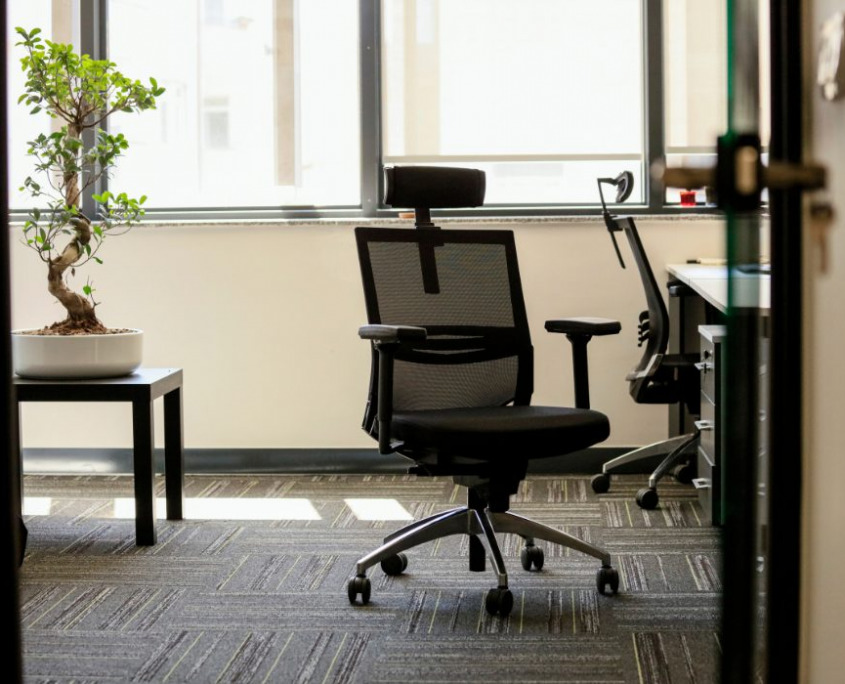Finding the right ergonomic chair
Sitting comfortably?
Working in an office typically involves spending a great deal of time sitting down on an office chair and this can add stress to areas within the body, especially the spine, neck and wrists. You may have had a DSE (Display Screen Equipment) assessment carried out in the past and this is done to ensure that you are working safely and aren’t putting unnecessary stress on your body. Ergonomic solutions can help ensure you are sitting safely and may be advised after a DSE has been completed.
What does ergonomics mean?
Firstly, let’s address what ergonomics means. Ergonomics is the process of developing or organising workplaces, products and methods so that they fit the individual who is using them. Ergonomics seeks to enhance workspaces and environments to minimise the chance of injury, as well as create a comfortable productive work environment. As technology changes and more research is conducted, the improvements with ergonomics will improve too and in turn, what’s available to help us work safely.
Ergonomic chairs
Let’s talk about chairs… sitting down causes several stresses in our bodies, especially our spines. Ergonomic office chairs are scientifically built with posture, comfort, support and health in mind. A good chair will help with all four of these considerations and for long term office workers, an ergonomic chair is vital.
There are many types of ergonomic chairs available for use in the office. No one type of office chair is necessarily the best, but there are some things that are very important to look for in a good ergonomic office chair. These things will allow the individual user to make the chair work well for their specific needs.
Here are a few things to look out for before purchasing an ergonomic chair.
Adjustability
The most important factor of a great ergonomic office chair is the adjustability of the chair. Everyone requires different needs things from their office chair so it needs to be able to adjust and adapt to its users needs.
Seat height
As everyone comes in different shapes and sizes, a good ergonomic chair will allow the seat height to be adjusted. At the proper height, your feet should be flat on the floor, with your knees at a 90-degree angle. This will reduce stress on your knees and lumbar region.
Backrest
A standard chair’s backrest doesn’t often take into account the natural curve of the spine, whereas an ergonomic chair back is typically made with that in mind, and often has a built-in curve promoting dynamic sitting, rather than a static posture to increase blood flow.
Lumbar support
Lumbar support for the spine can stabilize the upper body and neck and head and should be adjustable for the user’s needs.
Movement and stability
Your desk chair should be able to move and rotate easily so moving and reaching for items shouldn’t be a strain or be difficult. A chair that allows for movement also promotes a dynamic position and increases blood flow. With stability it’s also important to check what weight your chair will accommodate. Let’s face it, no employer wants to supply a chair that won’t be able to cope with its required load.
Seat and backrest materials
- Make sure the seat padding is made of high-quality foam. Insufficient padding and low-quality foam can lead to misalignment in the hips, imbalance, back pain, fatigue, and discomfort.
- Avoid unbreathable synthetic materials. Cloth fabric on the seat is comfortable and breathable.
- A mesh backrest keeps its users cool by keeping the air flowing, and comfortably contours the body while spreading the weight across a large area.
Here are a few other things that you can do to improve your workspace ergonomics!
Good posture
We all know that poor posture – such as slumping and slouching, can cause aches, pains and injuries, but research shows that posture can also affect how we feel, think and behave. One study found that good posture can help us feel more positive and recall positive memories more easily.
Regular breaks
Spending too long doing anything is bad for you. If you work at a screen all day, you are at greater risk of eye strain, headaches, blurred vision and general discomfort. So getting up every once in a while can massively improve your health!
If you would like to find out any more about ergonomic chairs or sit-stand desks, don’t hesitate to reach out. Get in touch here.









